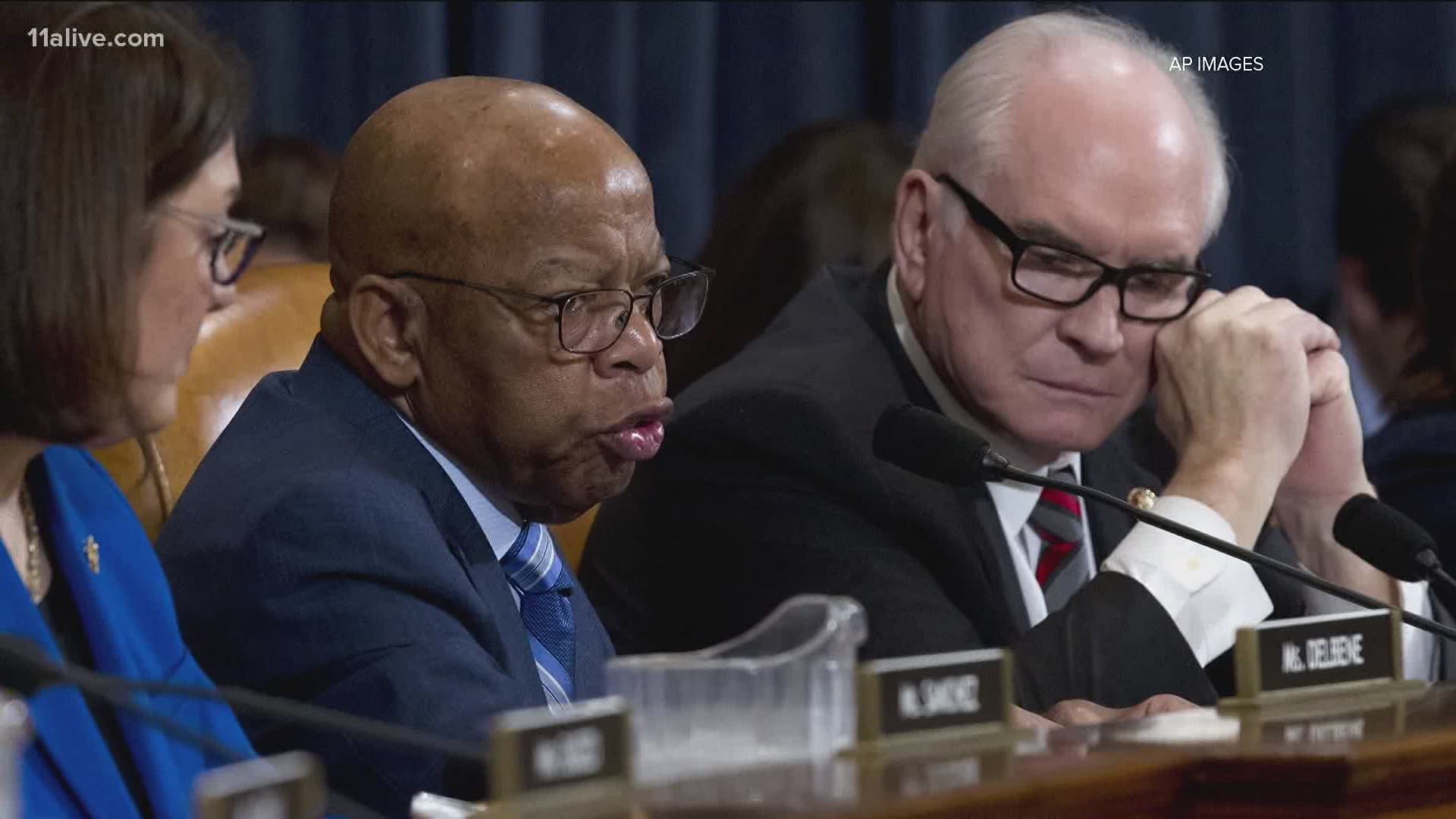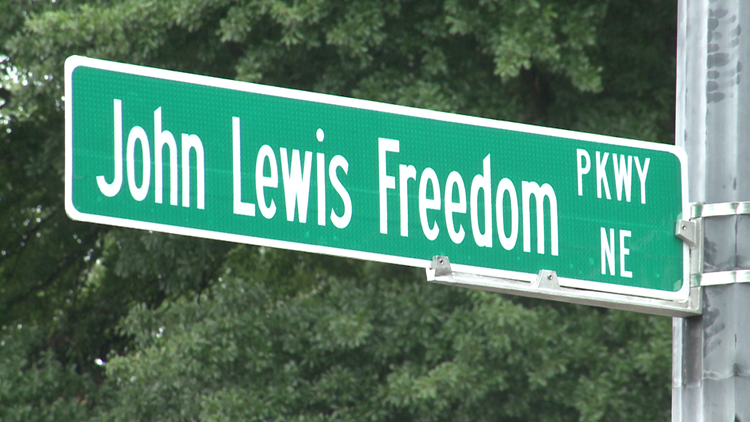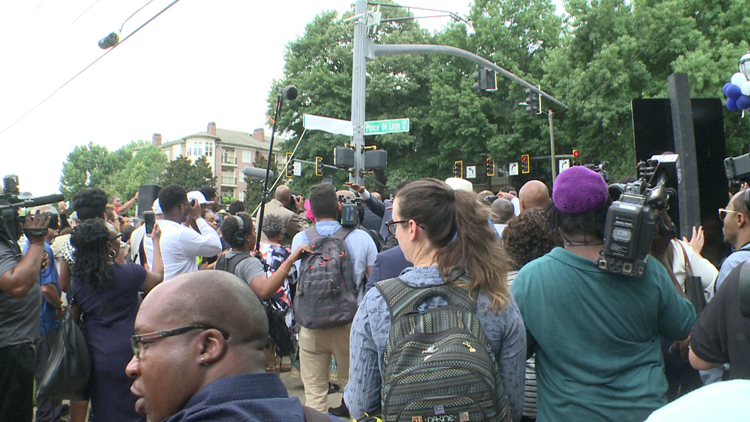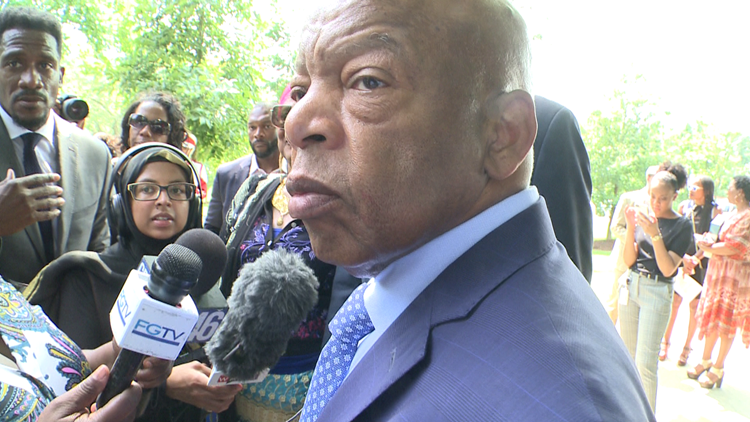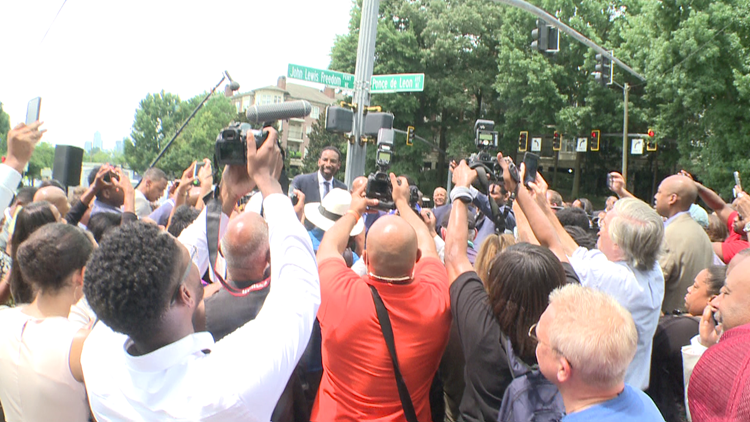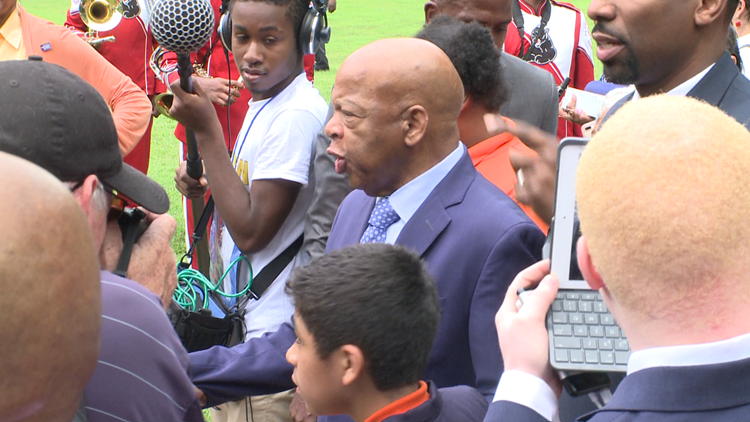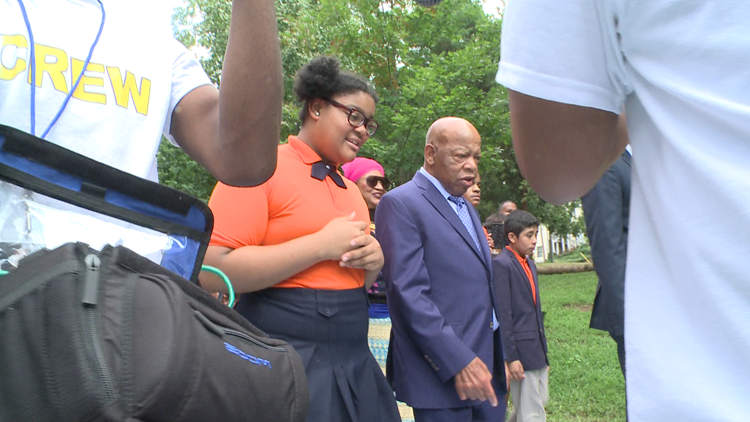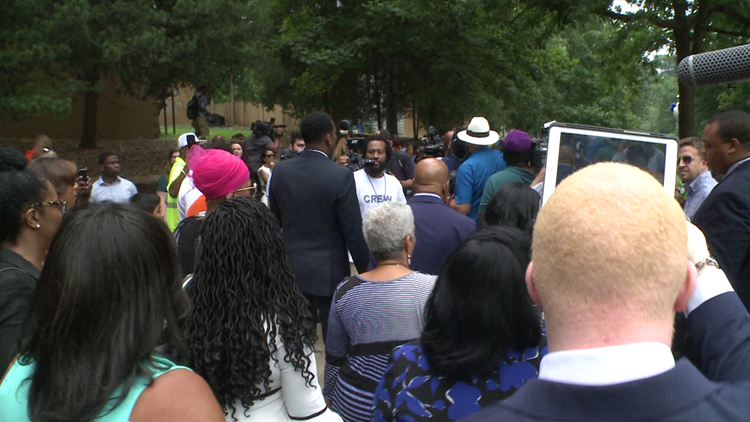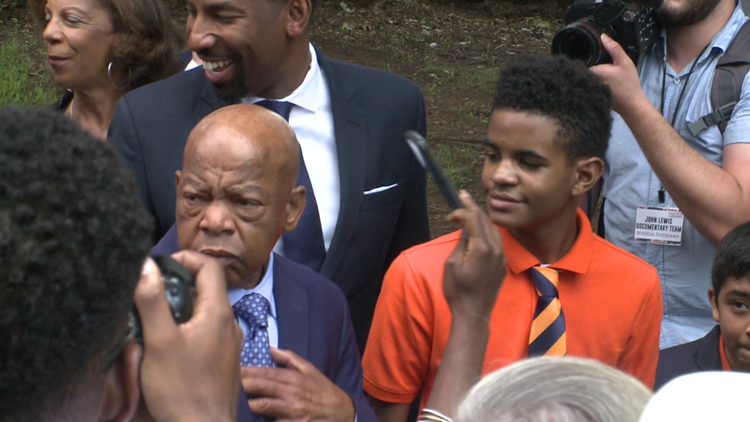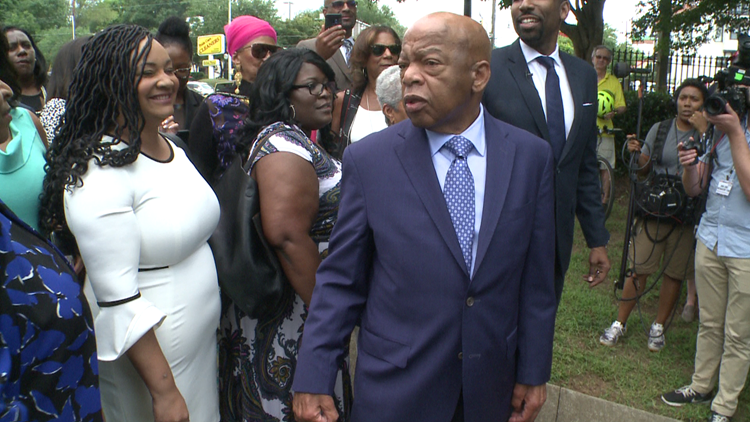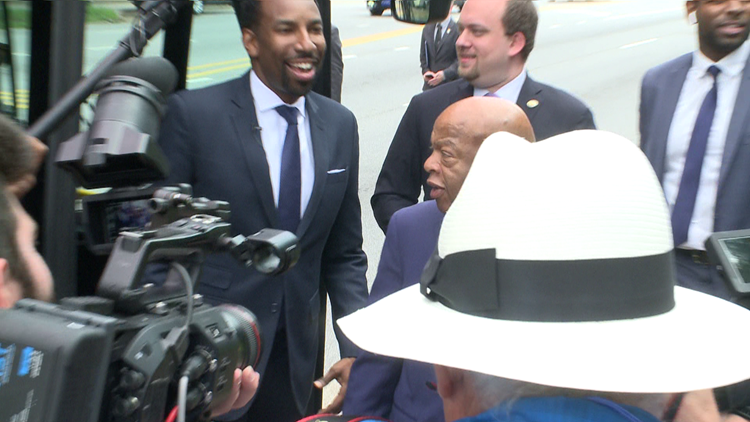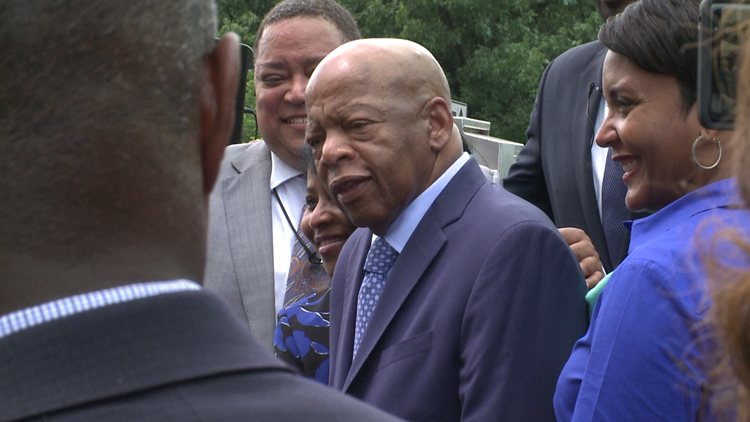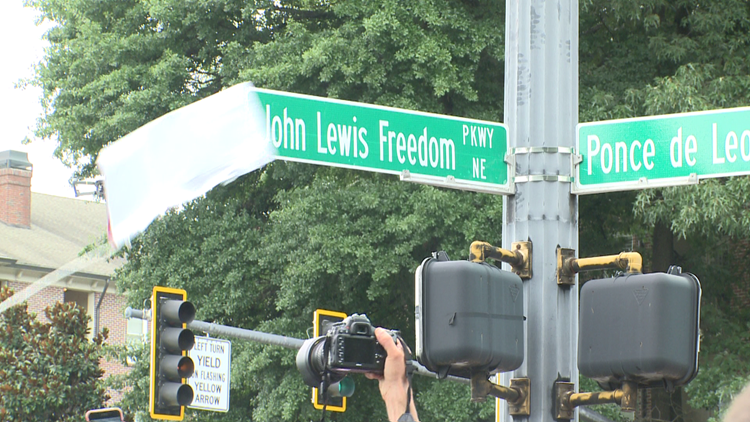ATLANTA — When he was part of the Atlanta City Council, John Lewis was part of what became the largest freeway revolt in the city's history.
Freeway highway traffic in Atlanta is infamous. The number of cars and trucks is legendary.
But to be honest, there could have been even more. Had all of the freeways that were originally planned for the inner part of Atlanta been constructed, the freeway traffic inside of Atlanta could have included much more traffic than we see today.
In the early years of the development of the interstate highway system, several different alignments were discussed regarding the placement of freeways inside what is now Interstate 285.
One of those proposals included the development and construction of an eight-to-ten lane wide freeway running parallel to and about three miles east of today's Downtown Connector.
This highway -- which would have been called Interstate 485 -- would have run from the current south end of Georgia 400, southward to connect with the northern end of I-675 to the south of Atlanta.

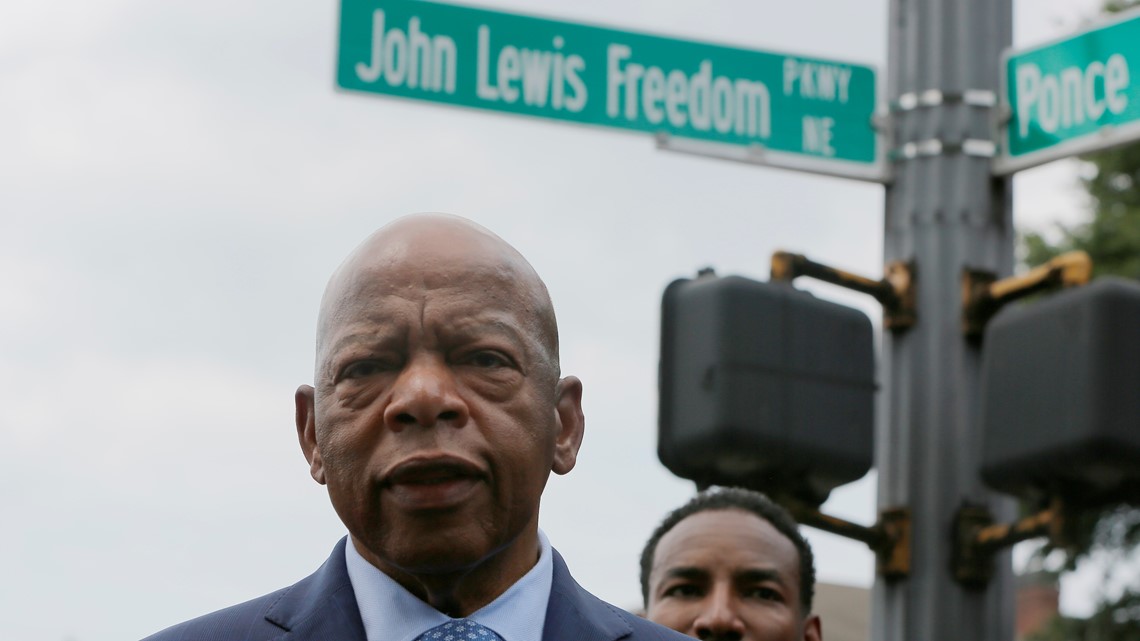
That interstate would have intersected with a second freeway -- a continuation of the Stone Mountain Freeway, which would have run from downtown Atlanta and connected to the existing Stone Mountain Freeway east of Decatur.
Through multiple alignments and multiple citizens' revolts, the highway configurations and routings were changed over more than a decade.
During the early 1980s, while Andrew Young was Atlanta's, John Lewis was a member of the city council.
"He had made a commitment against roads. No new roads," Young told 11Alive's Jeff Hullinger while remembering the life of Lewis. "He had given his word to his constituents. He said he would not vote for roads. He knew that we needed Georgia 400. He knew that we needed Presidential Parkway."
The two new highways would have intersected just east of downtown Atlanta.
"It gave me great pleasure to put his name on one of the roads that he voted against," Young said, laughing.
Today, the land that had been cleared for the massive stack exit complex houses the Carter Center. The roadway opened in the 1990s as Freedom Parkway, and in 2018 rededicated to the life and legacy of John Lewis.
Today, John Lewis Freedom Parkway gently winds from the Carter Center westward toward downtown Atlanta, and slightly northward a few blocks to end at Ponce de Leon Avenue. A smaller spur drive of the parkway runs eastward to Moreland Avenue.
Among several sculptures that sit upon the roadway is a 2005 piece by the late Alabama artist Thornton Dial titled "The Bridge."
Using mixed media, Dial formed a bridge-like structure representing Lewis' lifetime of work geared toward advancing civil rights and human rights. The sculpture ties Lewis' work to the efforts of the neighborhoods in that area who fought to prevent the demolition of homes and businesses for construction of what would have been Interstate 485.
You can see "The Bridge" at the corner of John Lewis Freedom Parkway and Ponce de Leon Avenue.
The John Lewis Freedom Parkway is a far cry from the eight lanes of screaming freeway traffic that would have passed through the corridor otherwise.
PHOTOS: Scenes from John Lewis Freedom Parkway unveiling
REMEMBERING JOHN LEWIS |

